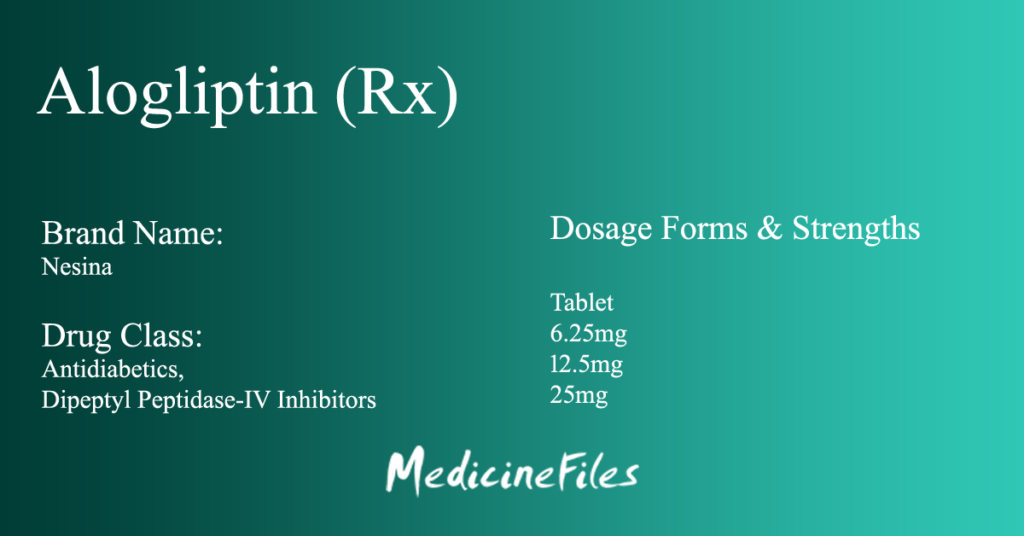Glipizide (Rx)
Glipizide Brand name: Glucotrol, Glucotrol XL, Minodiab
Dea Class: Rx (Prescription drug)
Drug Class: Antidiabetics, Sulfonylureas
Dosage form: Tablet 5mg, 10mg, Tablet, extended-release 2.5mg, 5mg, 10mg
Inthis Post
What is Glipizide and how does it work?
Glipizide is second-generation sulfonylurea; shorter duration of action than glyburide; no active metabolites
Used primarily in adults for the treatment of type 2 diabetes mellitus, as add-on therapy to metformin or other agents
Glipizide is preferred over glyburide for use in the older people and in patients with renal dysfunction.
What are Glipizide uses?
Glipizide is used for the treatment of type 2 diabetes mellitus as an adjunct to diet and exercise to improve glycemic control.
How should I take Glipizide?
Glipizide comes as tablets and extended-release (long-acting) tablets to take by mouth. The regular tablet is usually taken one or more times a day, 30 minutes before breakfast or meals. The extended-release tablet is usually taken once a day with breakfast. Take it around the same time(s) every day. Follow the directions on your prescription label carefully, and ask your doctor or pharmacist to explain any part you do not understand. Take it exactly as directed. Do not take more or less of it or take it more often than prescribed by your doctor.
Your doctor will probably start you on a low dose of glipizide and gradually increase your dose if needed. After you have taken this medicine for some time, glipizide may not control your blood sugar as well as it did at the beginning of your treatment. Your doctor may adjust the dose of your medication as needed so that the medication will work best for you. Be sure to tell your doctor how you are feeling and if your blood sugar test results have been higher or lower than normal at any time during your treatment.
Swallow the extended-release tablets whole. Do not chew, divide, or crush the tablets.
Glipizide helps control blood sugar but does not cure diabetes. Continue to take glipizide even if you feel well. Do not stop taking it without talking to your doctor.
Ask your pharmacist or doctor for a copy of the manufacturer’s information for the patient.
Glipizide Side Effects
The common side effects don’t need medical attention and will disappear as your body adjusts to the dosage. But if you are facing any serious or rare side effects, then immediately seek medical attention.
- Dermatologic reactions
- Abdominal pain
- Diarrhea
- Syncope
- Constipation
- Flatulence
- Dizziness
- Nervousness
- Headache
- Anxiety
- Depression
- Drowsiness
- Erythema
- Heartburn
- Maculopapular eruptions
- Hypoglycemia
- Morbilliform eruptions
- Nausea/vomiting
- Urticaria
- Cholestatic jaundice and hepatitis occur rarely but may progress to liver failure
What Are Warnings and Precautions for Glipizide?
Warnings
Patients with risk of severe hypoglycemia include the older people, debilitated, or malnourished; adrenal or pituitary insufficiency; stress due to infection, fever, trauma, or surgery; concomitant use with beta-blockers or other sympatholytic agents may impair the patient’s ability to recognize the signs and symptoms of hypoglycemia; use with caution
If patient is exposed to stress (fever, trauma, infection, surgery), it may be necessary to discontinue glipizide and initiate insulin
Use caution in hepatic/renal impairment
Use with caution in pregnancy and lactation
Increased risk of cardiovascular mortality suggested by product labeling but data is limited
FDA-approved product labeling for many medications have included a broad contraindication in patients with a prior allregic reaction to sulfonamides; however, recent studies have suggested that crossreactivity between antibiotic sulfonamides and nonantibiotic sulfonamides is unlikely to occur; increase in cardiovascular mortality suggested by product labeling but data is limited
Hypoglycemia is more likely to occur when caloric intake is deficient, after severe or prolonged exercise, when alcohol is ingested, or when more than one glucose-lowering drug is used
Hypoglycemia may be difficult to recognize in patients with autonomic neuropathy
Hemolytic anemia may occur with glucose 6-phosphate dehydrogenase (G6PD) deficiency when treated with sulfonylurea agents; consider a nonsulfonylurea alternative
Avoid using the extended-release tablets in patients with severe gastrointestinal narrowing of esophageal dysmotility
Clinical studies have not found conclusive evidence that anti-diabetic drugs reduce macrovascular risk
Loss of efficacy following prolonged use possible; if no contributing factors, to explain loss of efficacy identified, consider discontinuing therapy; additional antidiabetic therapy will be required
Before taking Glipizide, Cautions
Hypersensitivity; sulfa allergy
Type 1 diabetes
Diabetic ketoacidosis with or without coma
Pregnancy and Lactation
Pregnancy
-
Available data from a small number of published studies and postmarketing experience with in pregnancy over decades have not identified any drug associated risks for major birth defects, miscarriage, or adverse maternal outcomes
Lactation
- Breastfed infants of lactating women on therapy should be monitored for symptoms of hypoglycemia; although glipizide was undetectable in human milk in one small clinical lactation study
What Are Dosages of Glipizide?
Dosage Forms & Strengths
Glipizide Tablet 5mg, 10mg, Tablet, extended-release 2.5mg, 5mg, 10mg
20 mg/day PO for extended-release tablets (e.g., Glucotrol XL); 40 mg/day PO for regular-release glipizide tablets (e.g., Glucotrol).
20 mg/day PO for extended-release tablets (e.g., Glucotrol XL); 40 mg/day PO for regular-release glipizide tablets (e.g., Glucotrol).
Safety and efficacy have not been established.
Safety and efficacy have not been established.
Not indicated.
Glipizide brand name
Glucotrol; Tablet 5mg, 10mg
Glucotrol XL; Tablet, extended-release 2.5mg, 5mg, 10mg
Brand names of Glipizide combination products
- Metaglip® (containing Glipizide, Metformin)
Also Read:
Ertugliflozin Uses, Side Effects, Dosage, Brands
Empagliflozin Uses, Side Effects, Dosage, Brands
Dapagliflozin Uses, Side Effects, Dosage, Brands
Canagliflozin Uses, Side Effects, Dosage, Brands


